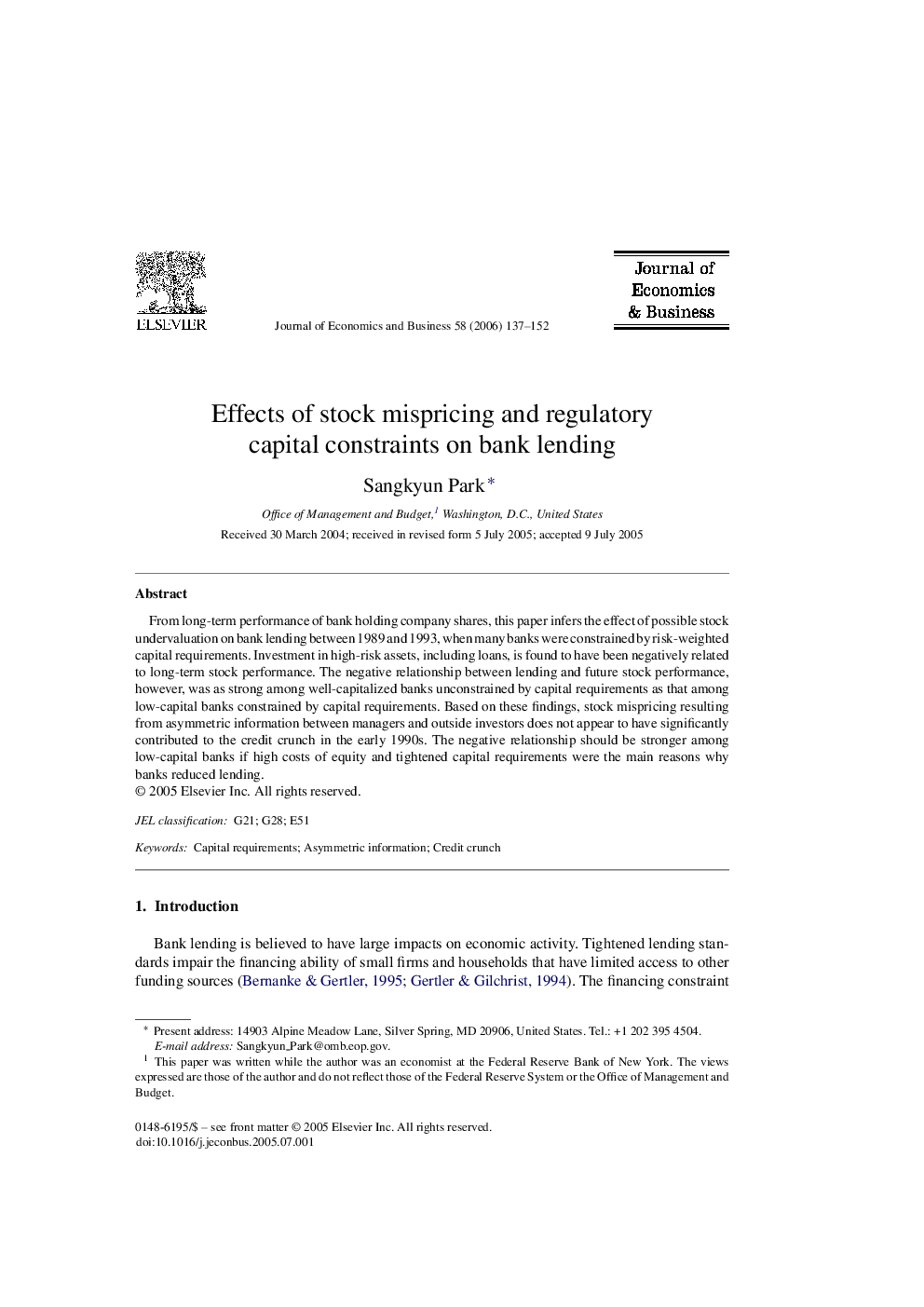| Article ID | Journal | Published Year | Pages | File Type |
|---|---|---|---|---|
| 958183 | Journal of Economics and Business | 2006 | 16 Pages |
From long-term performance of bank holding company shares, this paper infers the effect of possible stock undervaluation on bank lending between 1989 and 1993, when many banks were constrained by risk-weighted capital requirements. Investment in high-risk assets, including loans, is found to have been negatively related to long-term stock performance. The negative relationship between lending and future stock performance, however, was as strong among well-capitalized banks unconstrained by capital requirements as that among low-capital banks constrained by capital requirements. Based on these findings, stock mispricing resulting from asymmetric information between managers and outside investors does not appear to have significantly contributed to the credit crunch in the early 1990s. The negative relationship should be stronger among low-capital banks if high costs of equity and tightened capital requirements were the main reasons why banks reduced lending.
